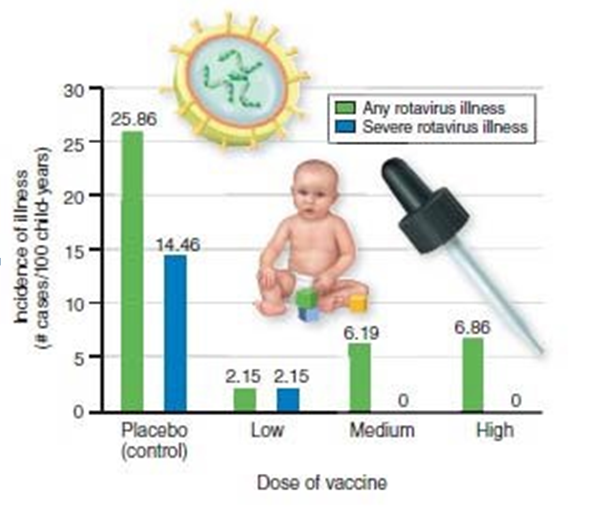In the graph, the X-axis is showing different doses of vaccine, including "placebo," "low," "medium," and "high." These levels of vaccine were applied to different groups of babies to test if and how much the vaccination helped reduce the incidence of rotavirus, an illness that can quickly dehydrates infants to critical or fatal levels. These dosages in this medical study represent

This figure shows graphed medical research results from a study on a new vaccine. The research was done in an effort to determine if a new vaccine would be effective in preventing potentially dangerous rotavirus infections in infants. Green data bars represent occurrence of infant cases that had normal rotavirus strains that aren't critically dangerous. Blue data bars represent occurrence of infant cases that had more dangerous rotavirus strains that can hospitalize or lead to fatality of infants.
A. the independent variable.
B. the standardized variable.
C. the dependent variable.
D. the control group.
E. the placebo.
A. the independent variable.
You might also like to view...
Which type of nutrient can pass across epithelial cells without any expenditure of ATP?
A. iron B. calcium C. protein D. fat E. magnesium
More than half of the mortality from the top 5 leading causes of death in the world come from:
A. factors within our control B. mythical health crisis C. cardiovascular disease D. smoking and obesity
Which of the following is similar between erythrocytes and lymphocytes?
a. They are both components of the plasma. b. They both have roles in immune response. c. They are both produced from stem cells. d. They both carry hemoglobin.
If a single stranded RNA virus contains genomic RNA that is complementary to the mRNA that it produces, what type of virus is this categorized as?
A. Plus strand B. Minus strand C. Negative strand D. Positive strand E. Minus strand or negative strand is acceptable.